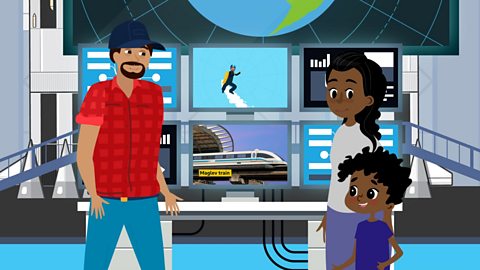Rian and Maya travel across India, finding out about the history of train travel.
Rian: I'm so excited, Auntie Maya! I can't believe we're going to spend the night on the train and sleep in these bunk beds!
Aunt Maya: Well, we're travelling a long way across India for this part of our journey.
Rian: We're setting off. How does a train work?
Aunt Maya: This one is an electric train, but some other trains use diesel fuel to power their engine. Let's take a look on my tablet. Train engines pull carriages that can carry all sorts of things. We're on a passenger train, so it carries people. But trains are also used to transport food, machinery and even animals over long distances. You can see there are wheels all along the engine and the carriages. These wheels sit on the rails that guide the train along its route.
Rian: Amazing! Who thought of that idea?
Aunt Maya: Using rails is a very old invention from all over the world. Rails have been discovered in China that are over 2000 years old. They think a horse was used to pull a cart along the wooden track.
Rian: That was so long ago!
Aunt Maya: I know! Some of the earliest rail transport in Europe was used around 500 years ago. But they were very different from modern railways and were just used for transporting things over a short distance. They had a rope system that was pulled by humans or animals that would pull little carts up a hill.
Rian: Now that does sound like hard work!
Aunt Maya: And then steam powered trains were invented. What do you notice about this one?
Rian: There's loads of smoke or something coming out of that tall tube on top of it. What's happening inside there?
Aunt Maya: That is the steam and smoke coming from the engine. Fire and coal were used to heat up water and then turn it into steam. That powered the engine. The tube is a chimney that lets the steam and smoke out.
Rian: Nice! So where did they used steam trains first?
Aunt Maya: The first working train was used in Wales and the first passenger train journey was made over a short distance in 1825.
Rian: Wow! So who built that train?
Aunt Maya: A man called George Stephenson. He designed many different steam engines. But it was his son, Robert, who built the most famous early one. It was called Rocket.
Rian: Good name!
Aunt Maya: I thought you'd like that one. Rocket took part in a competition with other engines along a short line of railway track. Out of all the entries it was the only one that completed the distance.
Rian: Good work, Rocket!
Aunt Maya: Rocket was used as an engine in the very first railway line joining two cities together. Soon after this steam trains and railway lines were built all over the world.
Rian: Where are your favourite train journeys around the world?
Aunt Maya: That's a good question. There's lots to pick from because it became such a popular way to travel. There was one called the Orient Express, which travelled all the way from London to Istanbul in Turkey. And there is one called the Trans-Siberian Railway, which travels for more than six days all the way across Russia.
Rian: Wow, that's really far!
Aunt Maya: But some trains just travel short distances. Lots of cities around the world have an underground railway, sometimes called a metro or subway or tube.
Rian: What do people use them for?
Aunt Maya: Underground trains below cities can take people to their jobs or help people avoid car traffic on the roads above.
Rian: How fast can we go on a train?
Aunt Maya: Pretty fast. The quickest trains are designed a bit like jet planes to make them go super fast.
Rian: But they don't have wings, do they?
Aunt Maya: No, but the bullet train from Japan looks a bit like a jet plane doesn't it?
Rian: It does!
Aunt Maya: Anyway… It's getting late. Shall we sort these bunk beds out?
Rian: Let's do it!
Aunt Maya: When we wake up tomorrow morning we should be nearly at our next stop.
Rian: Excellent!
Video summary
In this episode Maya and Rian travel on a train across India.
They discuss how trains are used to transport passengers and goods.
They learn about some of the earliest railways - initially used for pulling carts - and the invention of the steam train.
Maya tells Rian about George and Robert Stephenson and their train, 'Rocket', which was the winner of the Rainhill Trials in 1829 and become one of the locomotives for the first inter-city railway between Liverpool and Manchester.
They discuss famous train journeys around the world, such as the Orient Express, Trans-Siberian Railway and underground railways.
Questions to ask:
- Have you ever been on a train?
- What are trains used for?
- Who were George and Robert Stephenson?
- What is the name of the fast train in Japan that looks like a jet plane without wings?
- Where would you like to travel on a train?
- What are the benefits of a train compared to a car or a plane?
- How did the invention of the railways change people’s lives 200 years ago?
Suggested activities
- Use role play to explore the story of George and Robert Stephenson and the invention of Rocket. How would they have felt when their engine won the race? Role play travelling on a long train journey. Plot the journey on a map. What can you see out of the window?
- Find out more about the Stephensons and write a biography or fact file about them.
- Find out more about how steam trains work. Draw a picture of a stream train and label the key parts.
- Discuss the pros and cons of train travel compared to other modes of transport.
Resources
Teachers' notes. video
Download / print notes for the series (PDF)
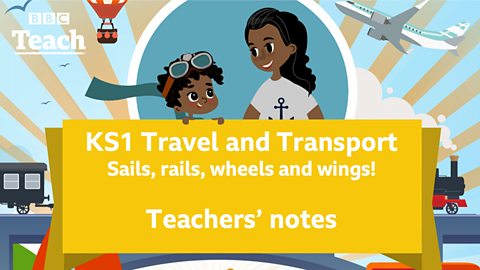
Colouring activity. document
Download / print (PDF)
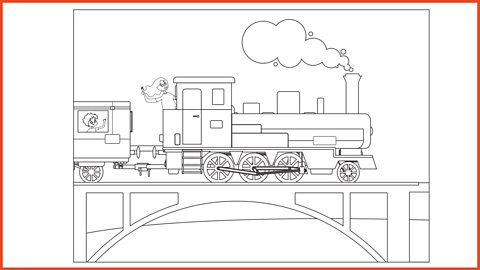
Sorting activity. document
Download / print (PDF)
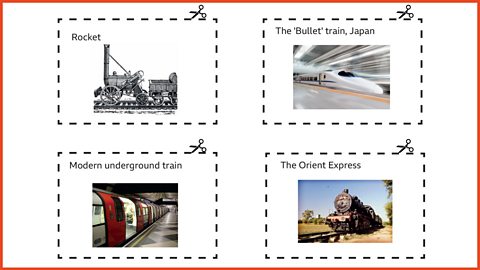
Other episodes in this series
1. Awesome animals. video
Rian and Maya set off, learning as they go how animals have been used throughout history for transport.
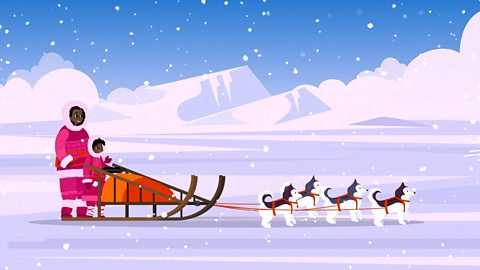
2. Wonderful wheels. video
A journey through the UK in an electric car with Rian and Maya finding out about wheeled transport.
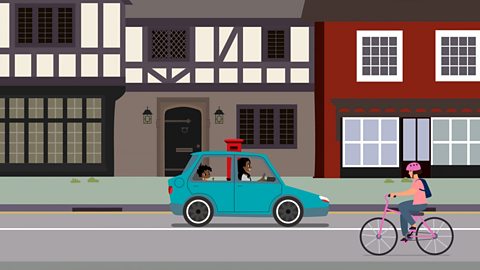
3. Brilliant boats video
Rian and Maya travel by sea to the continent of Africa and look at the history of boats.
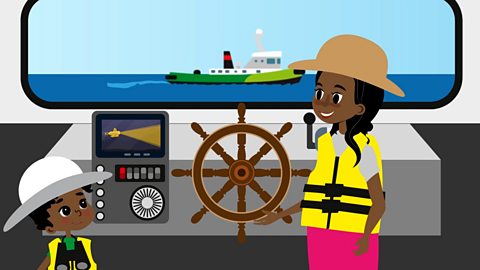
4. Fantastic flying machines. video
Rian and Maya travel through Africa in a hot air balloon and learn about different forms of air travel.
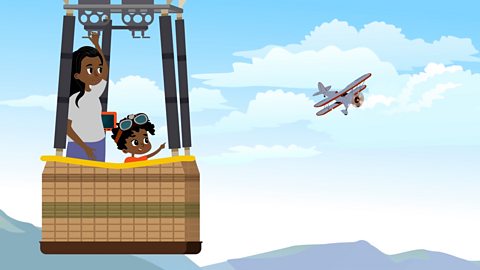
6. The future of transport. video
Maya and Rian are in Australia, where they travel in a driverless car to a 'Future of Transport' exhibition.
